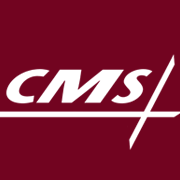CMS: Proposed Changes to Dialysis, ESRD Claims Reimbursement
CMS has released a proposed rule that would change end-stage renal disease and dialysis claims reimbursement structures as well as update the competitive bidding program for DMEPOS.

- The Centers for Medicare and Medicaid Services (CMS) has recently announced proposed changes to claims reimbursement models for end-stage renal disease (ESRD) and dialysis as well as revisions to the competitive bidding program for durable medical equipment, prosthetics, orthotics, and supplies (DMEPOS).

“Provisions in these rules are helping to move our healthcare system to one that values quality over quantity and focuses on achieving better health outcomes, preventing disease, helping patients live successfully at home, helping manage and improve chronic diseases, and fostering a more efficient and coordinated health care system,” explained the fact sheet.
Under the proposed changes to the ESRD prospective payment system, CMS would update payment rates for renal dialysis services performed on or after January 1, 2017.
Medicare providers are currently reimbursed for these services under a bundle prospective payment system that includes all renal dialysis services furnished for outpatient maintenance dialysis. The bundled payment rate is adjusted for several factors associated with patient characteristics.
CMS intends to update several of the adjustments to the bundled payment rate, including base rate, wage index, and the outlier policy for the 2017 calendar year.
The proposed ESRD prospective payment system base rate would increase the 2017 rate by $0.65 to total $231.04. This amount accounts for a reduced market basket increase of 0.35 percent, a wage index budget-neutrality adjustment factor of 0.999552, and a home and self-dialysis training budget-neutrality adjustment factor of a 0.999729.
CMS would also update the wage index to reflect the most current hospital wage data and varying wage levels in different areas that contain ESRD facilities.
Using 2015 claims data, CMS proposes to update the outlier policy that provides adjusted reimbursements for high-cost patients. The outlier payments represented 0.9 percent of all ESRD prospective payment system reimbursements in 2015, which is less than the 1.0 percent target. By updating the policy, CMS would increase outlier payments for high-cost ESRD beneficiaries.
The proposed rule would also increase the number of training hours by a registered nurse for peritoneal dialysis and hemodialysis, which is paid using an add-on adjustment. CMS would require 2.66 hours of training rather than 1.5 hours, which would total $95.57 in a home and self-dialysis add-on payment adjustment.
Providers who perform hemodialysis would also face an equivalency payment when there are three or more treatments per week. The reimbursement structure would be similar to the current model for peritoneal dialysis, explained the fact sheet.
In total, the proposed rule would increase all claims reimbursements to ESRD facilities.
“CMS projects that the updates for CY 2017 will increase the total payments to all ESRD facilities by 0.5 percent compared with CY 2016,” stated the fact sheet. “For hospital-based ESRD facilities, CMS projects an increase in total payments of 0.7 percent, while for freestanding facilities, the projected increase in total payments will be 0.5 percent.”
In addition to claims reimbursement changes, CMS has proposed modifications to the ESRD Quality Incentive Program. The agency would revise and add clinical and reporting measures for the 2018, 2019, and 2020 performance years.
In 2018, CMS would change the Hypercalcemia clinical measure to align it with specifications endorsed by the National Quality Forum. The modification would include plasma as an acceptable substrate and update the denominator definition to include patient-months.
For the 2019 and 2020 performance years, Medicare providers would need to report on more clinical and reporting measures to account for quality-of-life considerations.
The agency plans to add a Safety Measure Domain as a category of measures, which would represent 15 percent of a facility’s total performance score in 2019 and 10 percent in 2020. The new category would only contain the Expanded National Healthcare Safety Network Dialysis Event reporting measure.
“CMS wants to encourage facilities to provide full and accurate disclosure of dialysis-event data by combining the requirement that facilities report a full twelve months of data with its clinical evaluation of facility performance in reducing infections,” reported the fact sheet.
In 2020, CMS would also implement the Standardized Hospitalization Ratio and the Ultrafiltration Rate measures to ensure that the quality program “maintains the most broadly applicable clinical measures that capture the quality of care provided to as many beneficiaries with ESRD as possible.”
Additionally, the proposed rule contains changes to the competitive bidding program for DMEPOS items. CMS would require bidding entities to acquire and provide proof of a bid surety bond for each competitive bidding area in which it submits a bid.
Suppliers would also experience bid limits under the proposed changes, which would be determined by the fee schedule rates for the items before they are adjusted for competitive bidding information.
“This would avoid a downward trend where the new, lower bid limits apply to each subsequent round of bidding based on fee schedule rates adjusted using bidding information from the previous round,” reported the fact sheet.
The proposal also states that suppliers would be able to appeal breach of contract actions as well as contract termination actions.
To view all proposed changes in detail, please click here.
Dig Deeper:
• 5 Best Practices to Prepare for Value-Based Reimbursement
• Physicians List Top 5 Value-Based Payment Success Factors
